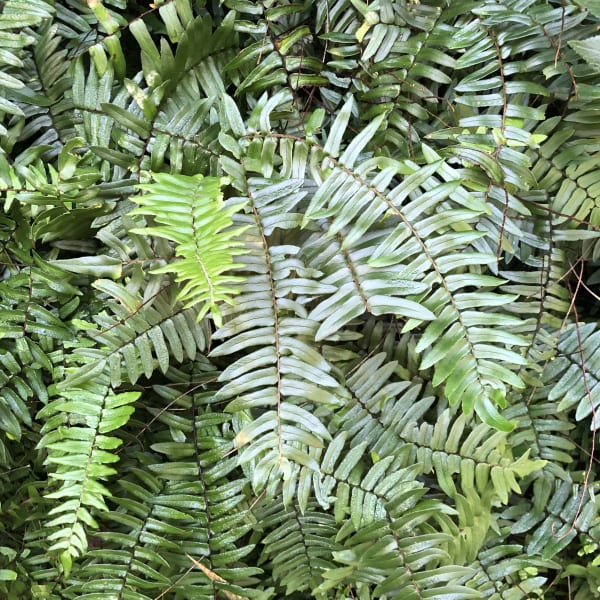The series of high-rainfall years we've had recently have really changed the look of local forests and gardens, with a lot of growth in the understorey of all sorts of ground covers and seedlings (not to mention all the weeds).
While there has been some terrible flooding landslips, generally the bush has benefited. One group of plants that has thrived in particular is the ferns, and of those the Sickle Fern (Pellaea falcata) has been looking spectacular. Its new growth is vivid green, while older fronds are darker in colour, and it can occur in large clumps, up to several metres across, in suitable conditions.
It can be seen in all kinds of shady forest conditions around the region, tolerating dry conditions once established. There are a couple of other ferns that look similar, including a smaller Pellaea species, and the introduced Fishbone Fern (Nephrolepis cordifolia) from northern NSW, which Sickle Fern can be used to replace in gardens.
This picture shows a close-up of Sickle Fern fronds, which have a smooth margin to the frond, whereas Fishbone Fern fronds have a wavy margin. Sickle Fern also tends to be darker in colour as a whole, apart from the new fronds.

A stand of Sickle Fern makes awesome habitat for small critters, including a range of insects, lizards and frogs. It provides shade, shelter and places to hide from predators.
It is also less rampant than Fishbone Fern, which tends to form dense clumps that exclude all other species over large areas. If you have a garden that's infested with Fishbone Fern, try replacing it with Sickle Fern as an alternative.

The shiny fronds make this fern a little tricky for amateur photographers like me to capture, and the above picture was taken on a sunny day which made the fronds positively glint in the light. But it gives you an impression of the plant's growth habit, with many fronds clustered together, somewhat growing over each other.
Here it is cohabiting with a few other species, including some Native Geranium (G. homeanum) and a mix of grass species, as part of a native meadow, growing in a disturbed but recovering part of Seven Mile Beach Reserve in Gerroa, underneath mixed eucalypt and paperbark canopy. You can also see it at many points along the Mount Keira Ring Track, and it does sometimes pop up in gardens near bushland; I've seen a few in Balgownie and Mount Pleasant that have made themselves right at home.





